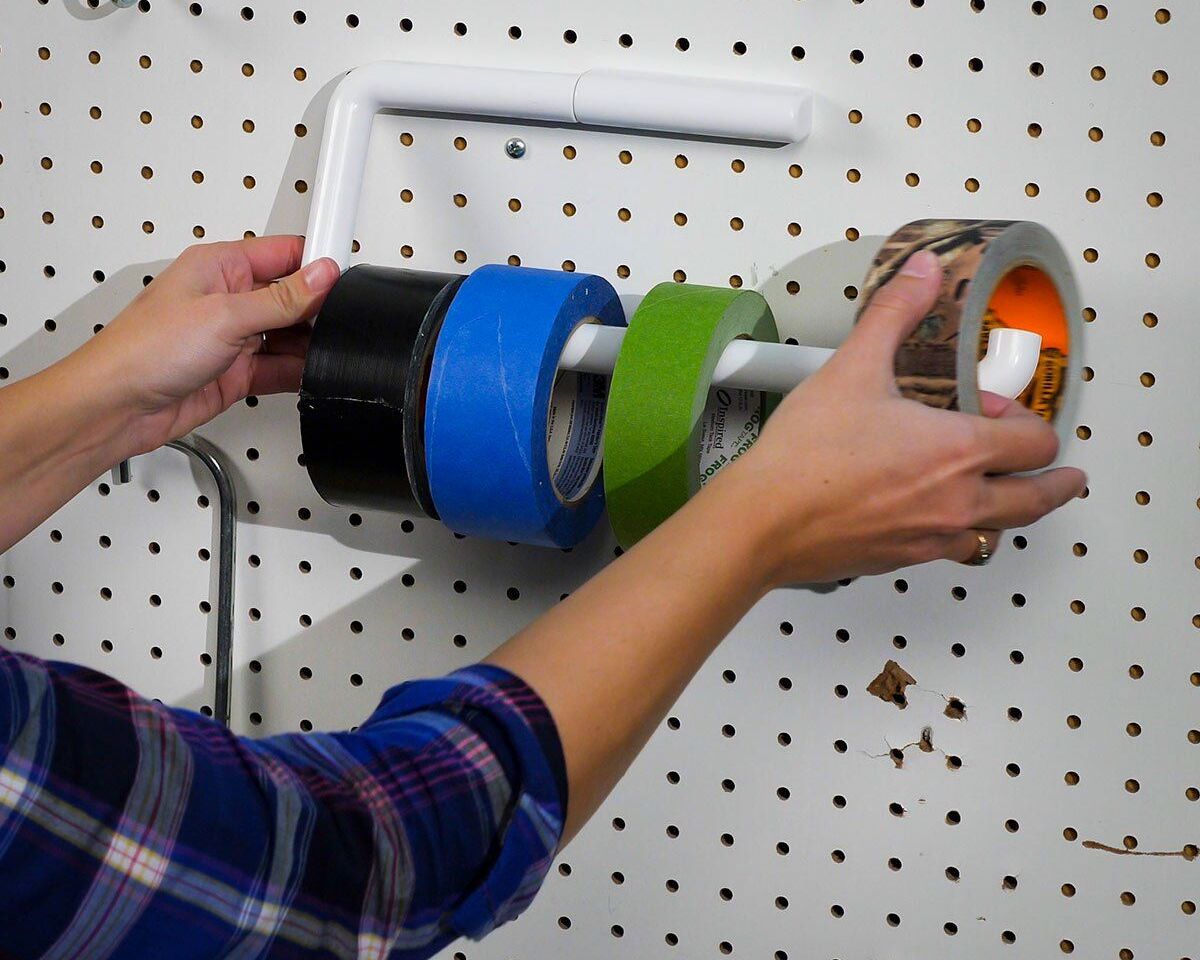

Articles
How To Store Rolls Of Tape
Modified: August 28, 2024
Learn the best way to store rolls of tape in this informative article. Find out how to keep your adhesive tapes organized and in great condition for future use.
(Many of the links in this article redirect to a specific reviewed product. Your purchase of these products through affiliate links helps to generate commission for Storables.com, at no extra cost. Learn more)
Introduction
Tape is an essential tool in many aspects of our daily lives. Whether it’s for packaging, crafting, or home improvement projects, having a supply of various types of tape on hand can be incredibly useful. However, improper storage can lead to tape losing its adhesive properties, becoming wrinkled or discolored, or even losing its shape. To ensure that your rolls of tape stay in optimal condition and are ready for use whenever you need them, it’s important to store them correctly.
In this article, we will explore different types of tape and discuss factors to consider when storing them. We will also provide you with proper storage techniques for different types of tape, including masking tape, duct tape, electrical tape, packaging tape, and specialty tapes. By following these guidelines, you can extend the lifespan of your tape and maintain its usability and effectiveness.
Key Takeaways:
- Proper storage of tape, including masking, duct, electrical, packaging, and specialty tapes, is crucial for maintaining their adhesive properties and usability. Factors such as temperature, humidity, light exposure, and storage position play a key role in preserving tape integrity.
- By following specific storage techniques for each type of tape, such as keeping them in a cool, dry place, protecting from light and UV exposure, sealing tightly, and inspecting before use, you can ensure that your tape remains in excellent condition and ready for use whenever needed.
Read more: How To Store Summer Rolls
Types of Tape
Tape comes in various types, each with its own unique properties and uses. Here are some common types of tape:
- Masking Tape: This tape is commonly used for masking off areas when painting or for holding surfaces together temporarily. It is usually made of a thin, easy-to-tear paper and features a light adhesive that can be removed without leaving residue.
- Duct Tape: Known for its durability and strength, duct tape is made of a fabric or cloth base coated with strong adhesive. It is widely used for repairs, bundling, and securing items together.
- Electrical Tape: This type of tape is specifically designed for insulating electrical wires and connections. It is made of vinyl or rubber material and has excellent electrical insulation properties.
- Packaging Tape: As the name suggests, packaging tape is used for sealing boxes and packages securely. It is typically made of polypropylene or acrylic material and has a strong adhesive for reliable bonding.
- Specialty Tapes: There are many specialty tapes available on the market catering to specific needs. These include double-sided tape, painter’s tape, carpet tape, and more. Each type serves a particular purpose and may have unique characteristics.
Understanding the different types of tape is crucial in determining the appropriate storage techniques. Each type has specific considerations when it comes to storage temperature, humidity, and exposure to light or air. By being aware of these factors, you can ensure the longevity and quality of your tape.
Factors to Consider
When it comes to storing rolls of tape, there are several factors that you need to consider to maintain their quality and usability. These factors include:
- Temperature: Extreme temperatures can affect the adhesive properties of tape. High temperatures can cause the adhesive to melt or become tacky, while low temperatures can make the adhesive brittle. It is recommended to store tape in a cool, dry place with a temperature range of 50-70°F (10-21°C).
- Humidity: High humidity can cause tape to absorb moisture, which can negatively impact its adhesive strength and cause it to become weak or brittle. It is advisable to store tape in an area with low humidity levels to prevent moisture absorption.
- Light and UV Exposure: Prolonged exposure to sunlight or UV radiation can cause tape to deteriorate, discolor, or lose its adhesive properties. It is best to store tape in a dark or opaque container to protect it from direct light and UV exposure.
- Air Exposure: Exposure to air can lead to tape drying out or becoming less sticky. To prevent this, it is recommended to seal the tape tightly to minimize air exposure. Consider using airtight storage containers or resealable plastic bags for added protection.
- Storage Position: Storing tape upright or on its side helps maintain its shape and prevent it from deforming or wrinkling. Avoid storing tape in a way that puts excessive pressure on the rolls, as this can cause them to flatten or distort.
- Storage Container: Choosing the right storage container is essential to protect your tape from dust, moisture, and other contaminants. Opt for a container that is clean, durable, and large enough to accommodate your tape rolls without crowding or compressing them.
By considering these factors and taking appropriate measures, you can ensure that your tape remains in optimal condition and ready for use whenever you need it. Now let’s explore the proper storage techniques for different types of tape to further enhance their longevity.
Proper Storage Techniques
To maximize the lifespan and usability of your rolls of tape, it’s important to follow proper storage techniques. Here are some guidelines to help you store your tape correctly:
- Keep it in a cool, dry place: Store your tape in an area with a stable temperature and low humidity. Avoid storing it in areas that are prone to extreme temperature fluctuations or high humidity, such as basements or attics.
- Protect from light and UV exposure: Light and UV radiation can degrade the quality of tape over time. Store your tape in a dark or opaque container to shield it from direct light and UV exposure.
- Seal it tightly: Properly seal the tape to minimize air exposure, which can cause the tape to dry out or lose its stickiness. Consider using airtight storage containers or resealable plastic bags to keep the tape protected.
- Store it in an upright position: Storing tape upright or on its side helps maintain its shape and prevents it from deforming or wrinkling. Avoid storing it in a way that puts excessive pressure on the rolls.
- Keep it away from moisture: Moisture can affect the quality of tape, making it less adhesive or causing it to become brittle. Store your tape in a moisture-free environment and avoid areas prone to condensation or high humidity levels.
- Label and organize: Clearly label your tape rolls and keep them organized by type or purpose. This way, you can easily find the tape you need when you require it, preventing unnecessary handling and potential damage.
- Inspect before use: Before using a roll of tape, inspect it for any signs of damage or deterioration. Check for discoloration, adhesive irregularities, or damage to the roll itself. If the tape appears compromised, it’s best to replace it with a new roll.
Following these storage techniques will help preserve the quality and effectiveness of your tape, ensuring that it remains ready for use whenever you need it. Now, let’s explore specific storage recommendations for different types of tape.
Storing Rolls of Masking Tape
Masking tape is commonly used in painting projects and for holding surfaces together temporarily. To ensure the longevity of your masking tape, here are some key storage recommendations:
- Keep it in a cool, dry place: Store your masking tape in a controlled environment with a temperature between 50-70°F (10-21°C) and low humidity. Avoid storing it in damp or humid areas.
- Protect from direct light: Masking tape should be stored in a dark or opaque container to shield it from exposure to light. This will help prevent the tape from drying out or losing its adhesive quality.
- Store it upright: Keep your rolls of masking tape stored upright or on their side to maintain their shape and prevent them from becoming wrinkled or deformed.
- Avoid excessive pressure: Be mindful not to stack heavy objects on top of your masking tape rolls, as this can cause them to flatten or distort.
- Use a tape dispenser: Consider using a tape dispenser with a built-in cutter to keep your masking tape neatly organized and easily accessible.
- Inspect before use: Before using masking tape, check for any signs of damage or deterioration. If the tape appears discolored or doesn’t adhere properly, it’s best to replace it.
By following these storage recommendations, you can ensure that your masking tape remains in excellent condition and ready to be used for all your painting and temporary holding needs.
Store rolls of tape in a cool, dry place to prevent them from drying out or becoming less sticky. Keep them away from direct sunlight and extreme temperatures.
Read more: How To Store Cinnabon Rolls
Storing Rolls of Duct Tape
Duct tape is known for its durability and strength, making it a popular choice for various repair and bonding applications. To maintain the quality of your duct tape, here are some important storage tips:
- Choose a cool, dry storage location: Store your rolls of duct tape in a cool, dry area with a temperature ranging from 50-70°F (10-21°C). Avoid storing duct tape in humid or excessively hot environments.
- Protect from direct sunlight: Exposure to direct sunlight can cause duct tape to deteriorate. Store it in a dark or opaque container to shield it from UV radiation and prevent discoloration or weakening of the adhesive.
- Keep it tightly sealed: Ensure that your duct tape rolls are tightly wrapped and sealed. This prevents air exposure and helps retain the adhesive qualities of the tape. Consider using a sealable plastic bag or a duct tape dispenser with a built-in cutter.
- Store it in an upright position: To maintain the shape of your duct tape rolls, store them upright or on their side. Avoid storing them in a way that causes excessive pressure or results in the tape becoming flattened or distorted.
- Inspect before use: Prior to using duct tape, inspect the roll for any signs of damage or deterioration. Check for any discoloration, uneven adhesive, or tears in the tape. If the tape appears compromised, it’s best to replace it with a new roll for optimal results.
By following these storage recommendations, you can ensure that your rolls of duct tape remain in excellent condition and ready to tackle any repair or bonding task you may encounter.
Storing Rolls of Electrical Tape
Electrical tape is specifically designed for insulating electrical wires and connections. To ensure the effectiveness and longevity of your electrical tape, proper storage is key. Here are some essential tips for storing electrical tape:
- Choose a controlled environment: Store your rolls of electrical tape in a cool, dry place with a temperature range of 50-70°F (10-21°C). Avoid storing it in areas with high humidity or extreme temperature fluctuations.
- Protect from light and UV exposure: Light and UV radiation can degrade the quality of electrical tape. Store the rolls in a dark or opaque container to prevent exposure to direct sunlight or strong lighting.
- Seal the rolls tightly: Make sure the electrical tape rolls are tightly sealed to prevent air exposure. This will help maintain the adhesive properties and prevent the tape from drying out or losing its stickiness over time.
- Store it in an upright position: Keep the rolls of electrical tape stored upright or on their side to maintain their shape and prevent them from deforming. Avoid stacking heavy objects on top of the rolls.
- Label and organize: Clearly label your electrical tape rolls and keep them organized by color or type. This will make it easier to find the specific tape you need for electrical projects and minimize handling and potential damage.
- Inspect before use: Always inspect the electrical tape before using it. Check for any signs of damage, such as discoloration, uneven adhesive, or tears in the tape. If the tape appears compromised, it’s best to replace it with a new roll.
By following these storage recommendations, you can ensure that your rolls of electrical tape remain in top-notch condition and are ready for use whenever you need to insulate electrical connections or wires.
Storing Rolls of Packaging Tape
Packaging tape is essential for sealing boxes and packages securely. To preserve the quality and usability of your packaging tape, it’s important to store it properly. Here are some key recommendations for storing rolls of packaging tape:
- Choose a cool, dry location: Store your rolls of packaging tape in a controlled environment with a temperature ranging from 50-70°F (10-21°C). Avoid storing it in areas with high humidity or extreme temperatures.
- Protect from light and UV exposure: Extended exposure to light and UV radiation can degrade the adhesive properties of packaging tape. Store the rolls in a dark or opaque container to minimize light exposure and maintain the tape’s effectiveness.
- Seal it tightly: Ensure that your packaging tape rolls are tightly sealed. This prevents air exposure, which can cause the tape to lose its stickiness. Consider using a tape dispenser with a built-in cutter and a storage compartment to keep the tape neatly sealed.
- Store it in an upright position: Keep your rolls of packaging tape stored upright or on their side to maintain their shape and prevent them from becoming flattened or deformed.
- Avoid excessive pressure: Do not stack heavy objects on top of your packaging tape rolls, as this can lead to distortion or damage.
- Label and organize: Clearly label your packaging tape rolls and organize them by width or strength. This will help you easily identify the appropriate tape for different packaging needs, reducing unnecessary handling and potential damage.
- Inspect before use: Before using packaging tape, inspect the roll for any signs of damage, such as tears, wrinkles, or irregular adhesive. If the tape appears compromised, it’s best to replace it with a new roll for optimal sealing results.
By following these storage recommendations, you can ensure that your rolls of packaging tape are maintained in excellent condition, guaranteeing secure and reliable package sealing whenever you need it.
Storing Rolls of Specialty Tapes
Specialty tapes cater to specific needs and come in a wide range of varieties, including double-sided tape, painter’s tape, carpet tape, and more. To preserve the quality and effectiveness of your specialty tapes, here are some important storage tips:
- Follow manufacturer’s instructions: Specialty tapes often come with specific storage guidelines provided by the manufacturer. Make sure to read and follow these instructions to ensure optimal storage conditions.
- Choose an appropriate storage environment: Specialty tapes may have unique requirements regarding temperature, humidity, and light exposure. Store them in an environment that aligns with the manufacturer’s recommendations to maintain their quality.
- Protect from light and UV exposure: If specialty tapes are sensitive to light or UV radiation, store them in a dark or opaque container to shield them from direct light sources and prevent degradation.
- Seal tightly and protect from air exposure: To preserve the adhesive properties of specialty tapes, ensure that they are tightly sealed and protected from air exposure. Consider using sealable plastic bags or resealable containers to keep them airtight.
- Store them in an appropriate position: Depending on the specialty tape, store them in an upright position or as recommended by the manufacturer to maintain their shape and prevent damage or deformation.
- Label and organize: Clearly label your specialty tape rolls and keep them organized based on their type or purpose. This makes it easier to locate and access the specific tape you need for your projects.
- Inspect before use: Before using specialty tapes, inspect them for any signs of damage, such as tears, adhesive irregularities, or discoloration. If the tape appears compromised, it’s best to replace it with a new roll for optimal results.
By adhering to these storage recommendations and considering any additional instructions provided by the manufacturer, you can ensure that your rolls of specialty tape remain in excellent condition and are ready for use whenever you require their unique properties.
Read more: How To Store Fabric Rolls
Conclusion
Properly storing rolls of tape is essential to maintain their quality, adhesive properties, and usability. Whether you’re storing masking tape, duct tape, electrical tape, packaging tape, or specialty tapes, following the appropriate storage techniques will ensure that your tapes are ready for use whenever you need them.
Factors such as temperature, humidity, light exposure, air exposure, and storage position play a crucial role in preserving the integrity of your tape. Ensuring a cool, dry environment, protecting from direct light and UV exposure, sealing the tapes tightly, storing them upright, and organizing them properly are key considerations for successful tape storage.
By inspecting your tapes before use and replacing any compromised rolls, you can avoid any potential issues and ensure optimal performance. Additionally, following any specific storage instructions provided by manufacturers for specialty tapes is important to maintain their unique properties and effectiveness.
By implementing these storage techniques, you can prolong the lifespan of your tape, minimize waste, and save money in the long run. Gone will be the days of discovering wrinkled, dried-out, or ineffective tape when you need it most, as your stored rolls of tape will be in excellent condition and ready for any project or task.
Remember, proper storage is not only about maintaining the quality of the tape but also about saving you time and frustration in the future. So, take the time to store your rolls of tape correctly, ensuring that they remain in optimal condition, and enjoy the convenience and functionality they provide whenever you need them.
Frequently Asked Questions about How To Store Rolls Of Tape
Was this page helpful?
At Storables.com, we guarantee accurate and reliable information. Our content, validated by Expert Board Contributors, is crafted following stringent Editorial Policies. We're committed to providing you with well-researched, expert-backed insights for all your informational needs.
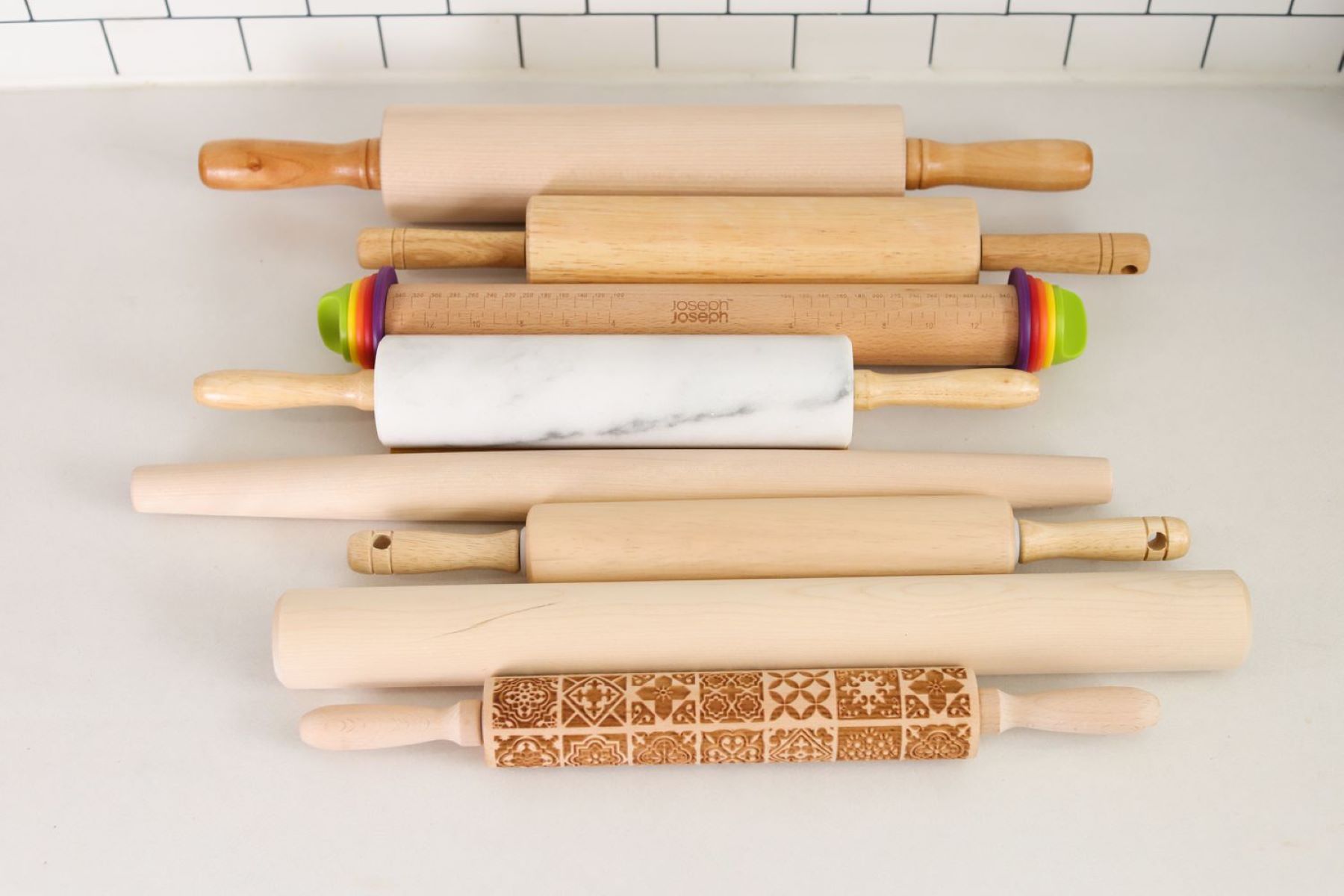
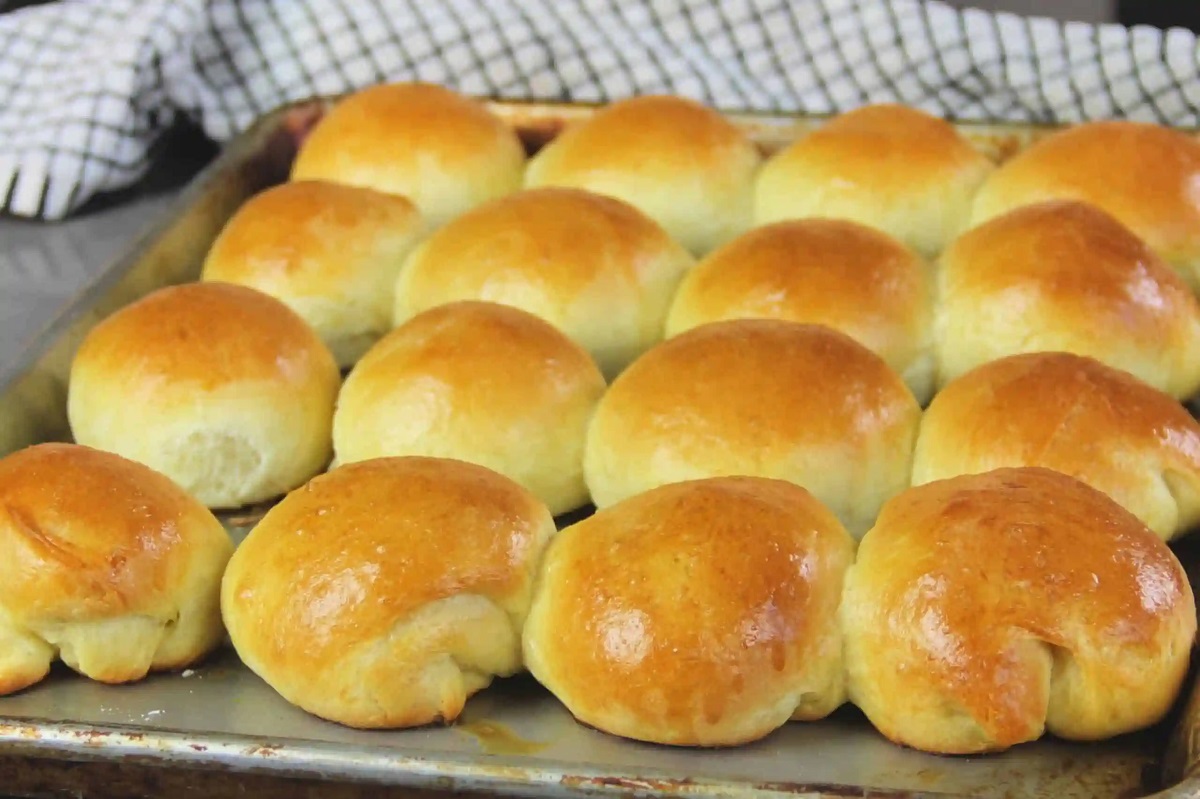
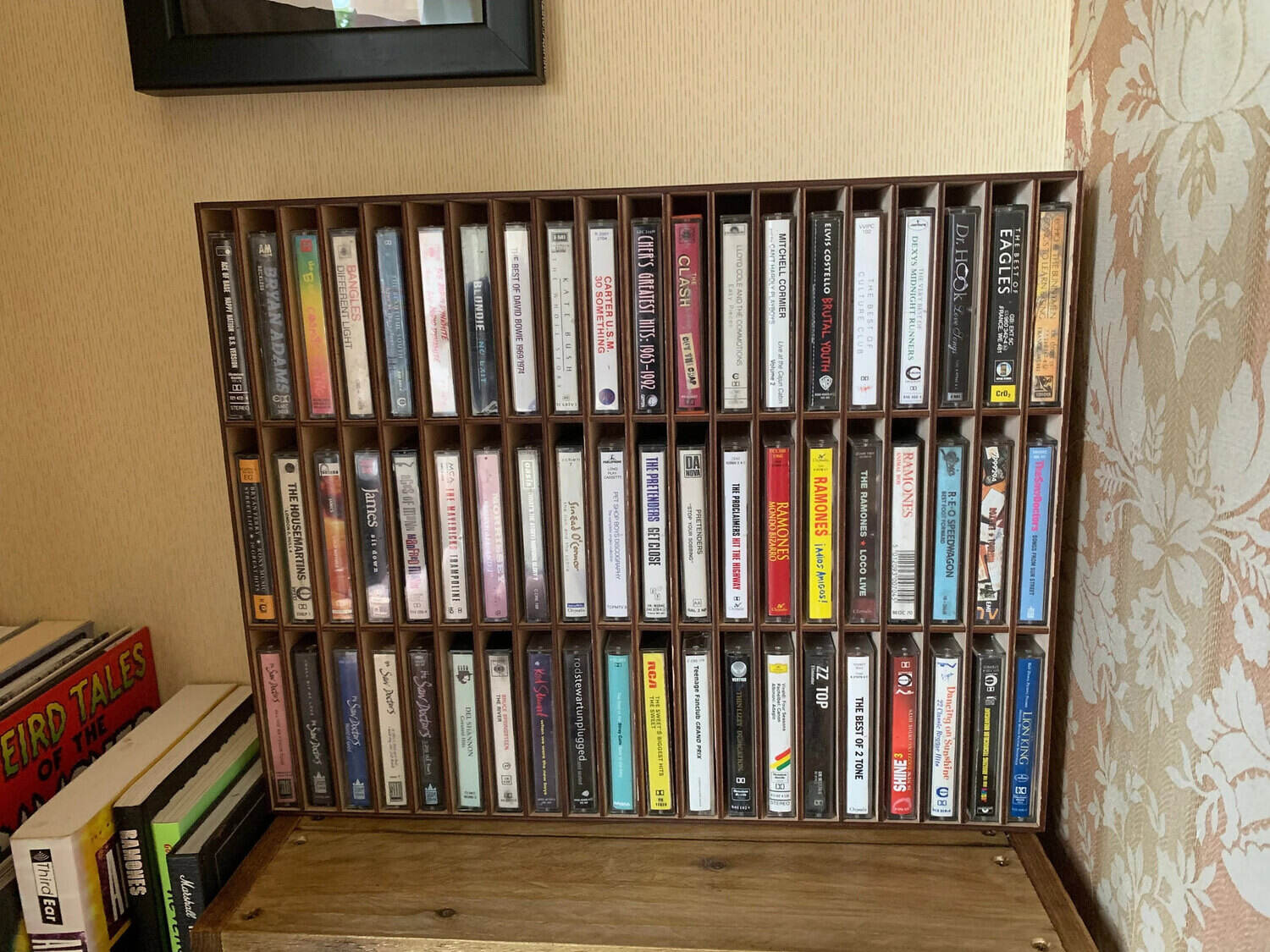

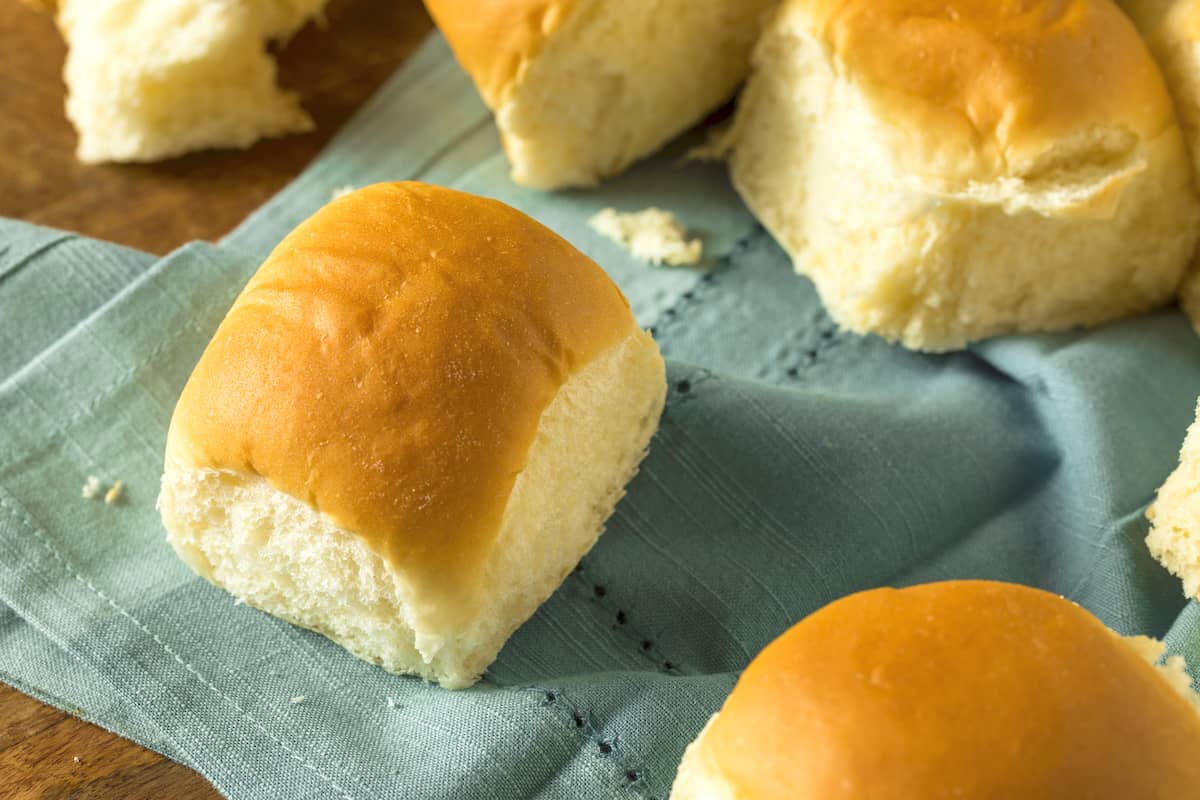
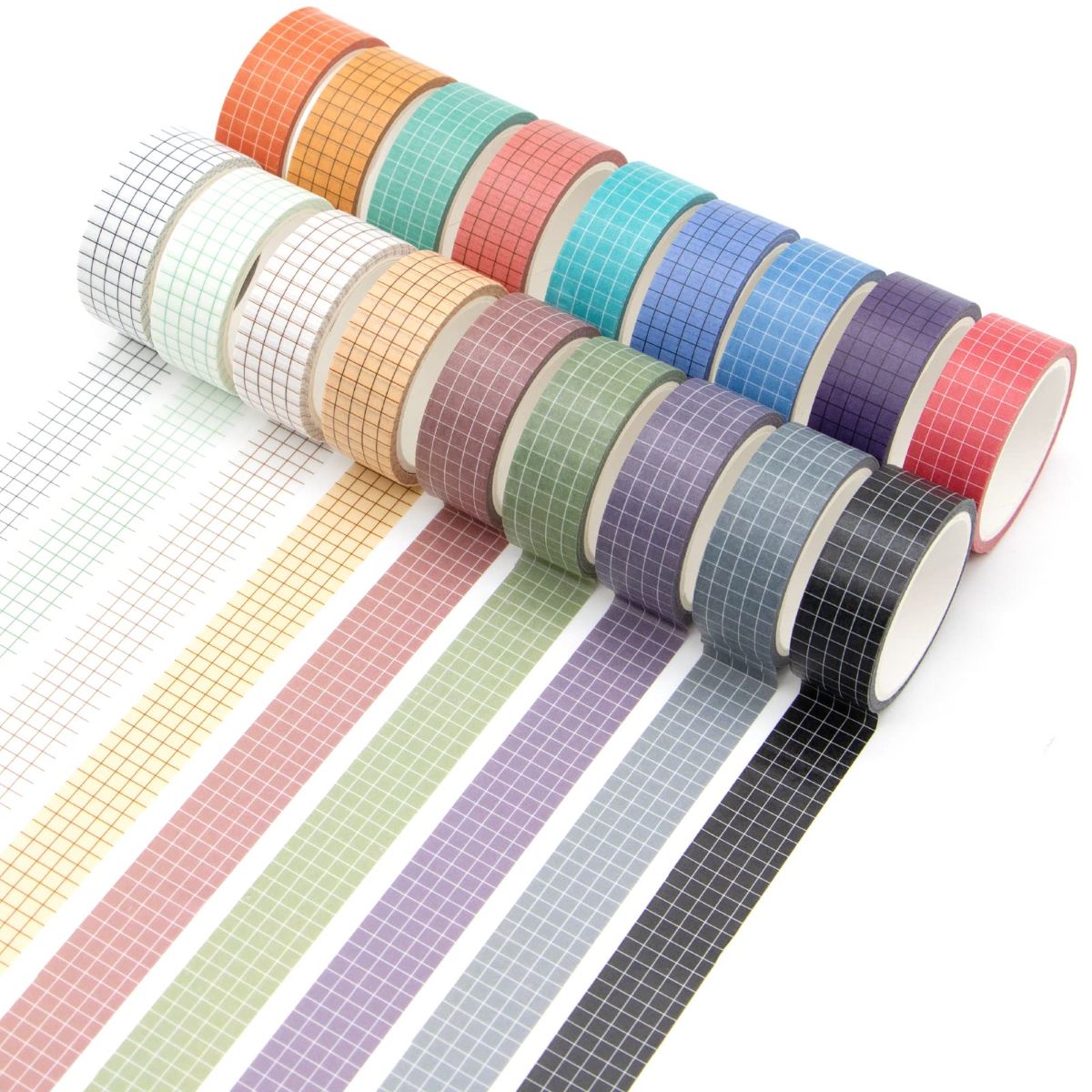
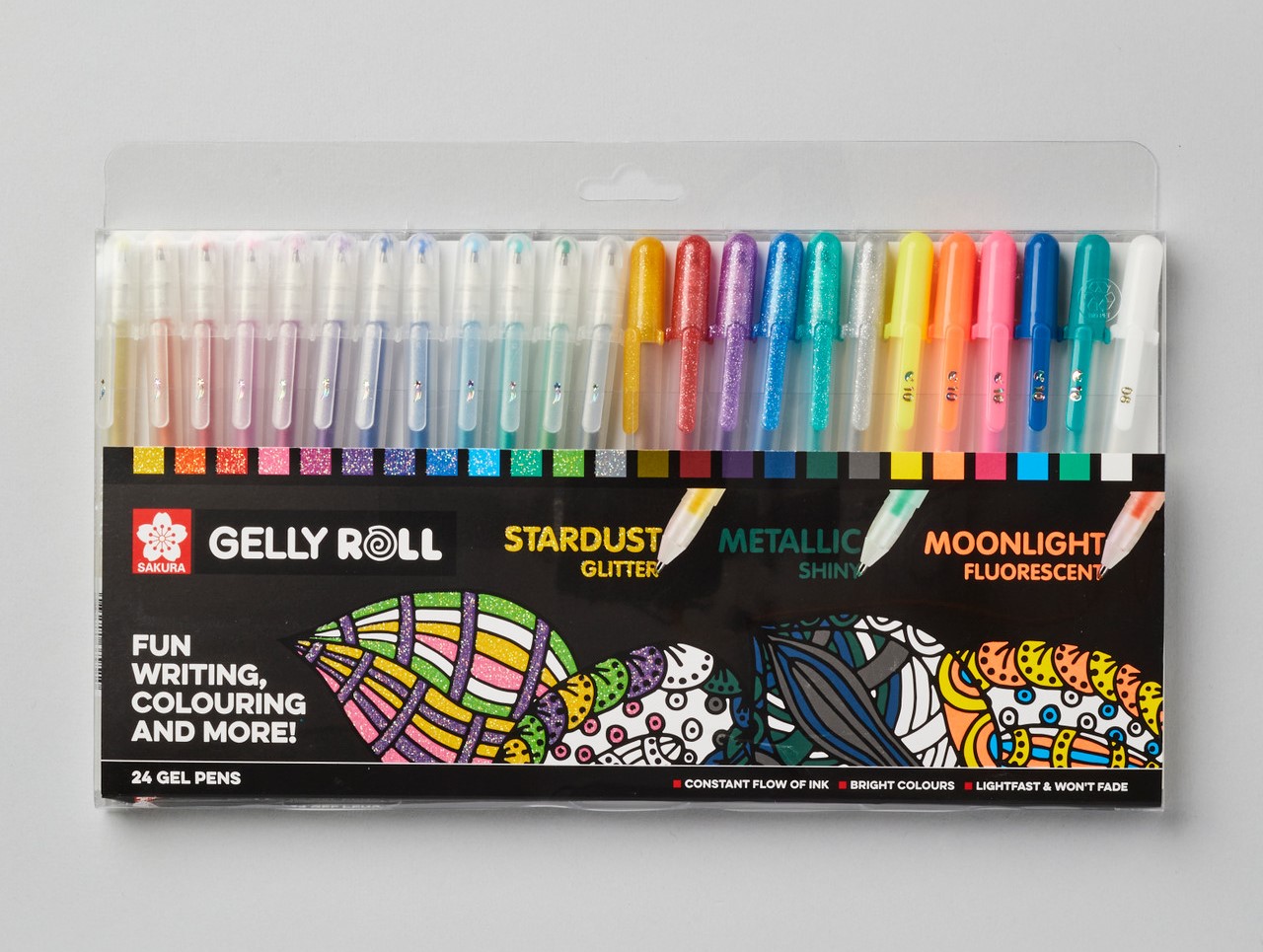





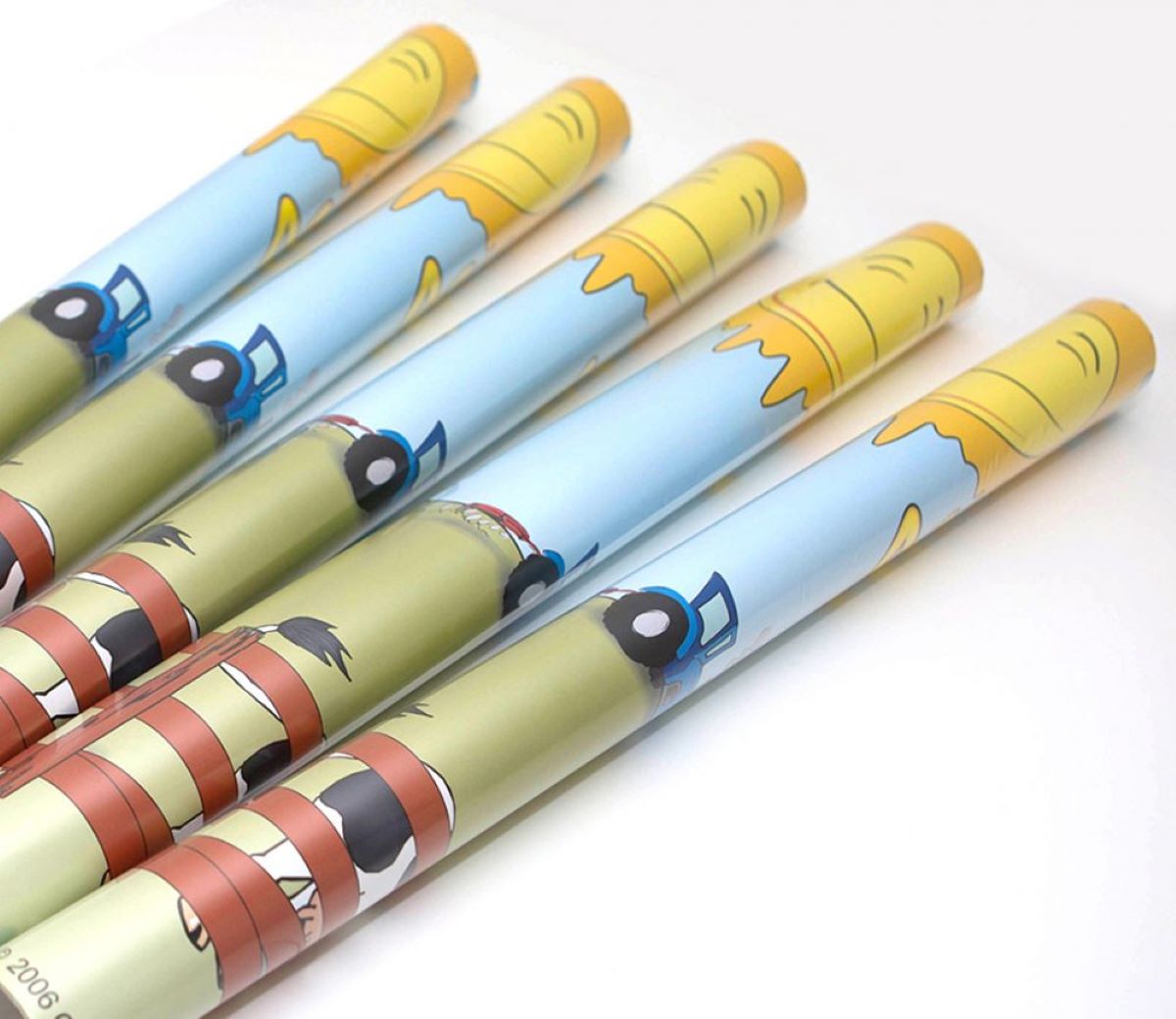

0 thoughts on “How To Store Rolls Of Tape”